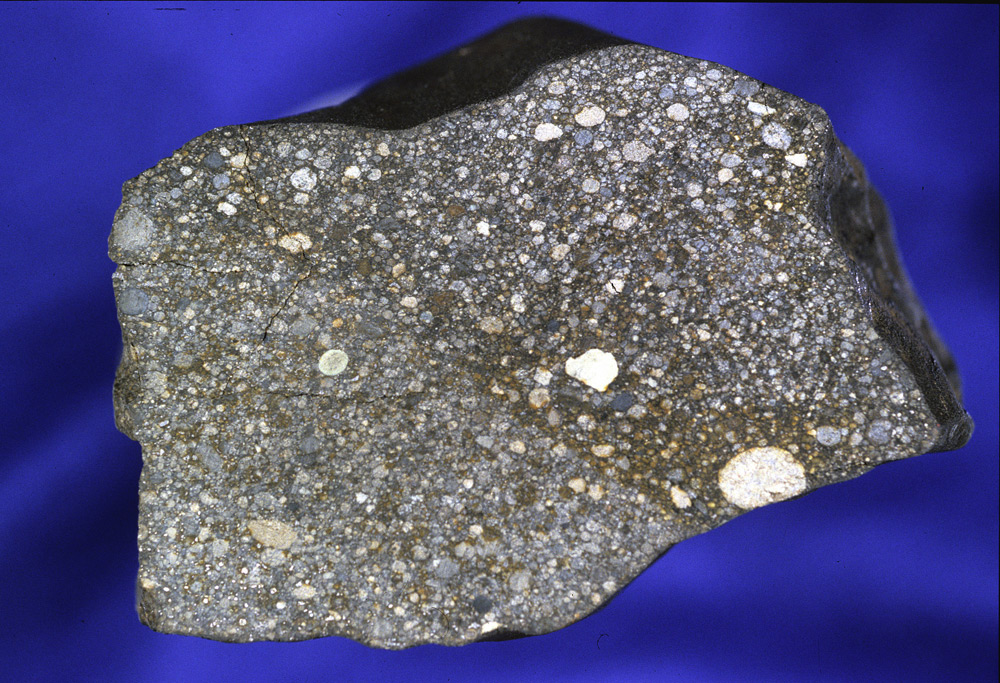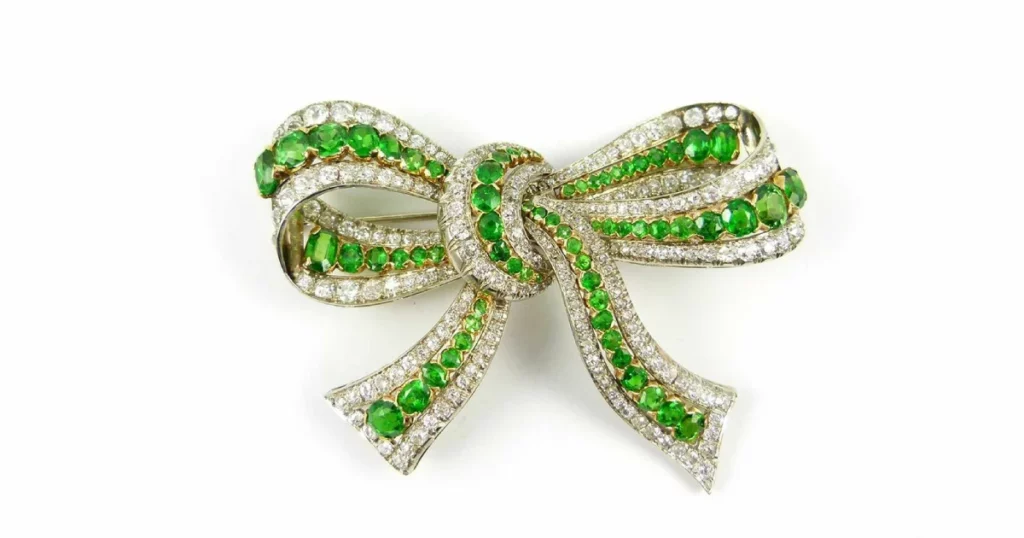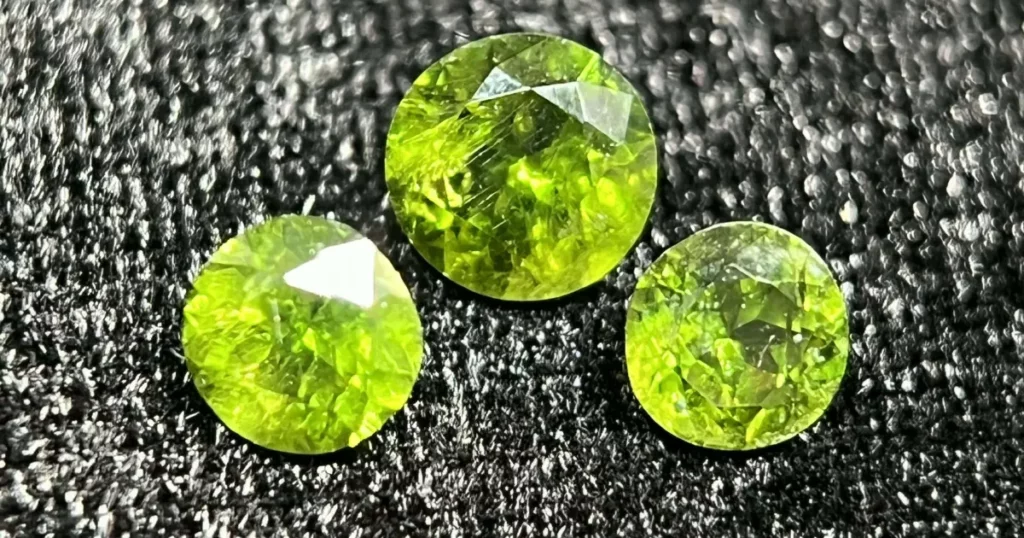Meteorites have fascinated humans for centuries, offering glimpses into the cosmos and the history of our solar system. Understanding the different meteorite types is crucial for both scientific research and amateur stargazing. In this blog post, we’ll delve into the various meteorite rock types, explaining their origins, compositions, and significance.
Whether you’re a seasoned astronomer or simply curious about space, this guide will help you appreciate the diverse and intriguing world of meteorites.
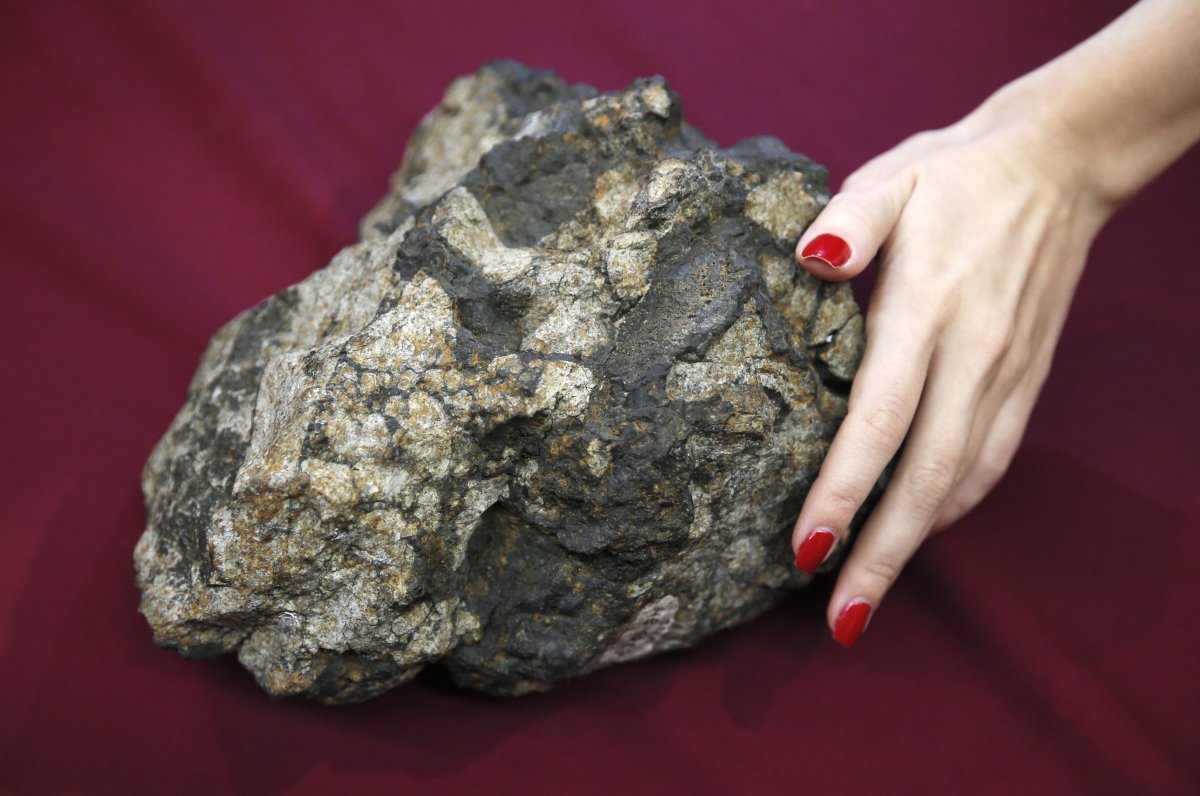
The Main Meteorite Types
Meteorites are classified into three main types: stony meteorites, iron meteorites, and stony-iron meteorites. Each type has unique characteristics that reveal information about its origin and the conditions it has experienced. Let’s explore each of these meteorite types in detail.
Also, if you are looking to find meteorites, we recommend that you check out the article Meteorite Identification: A Comprehensive Guide.
Stony Meteorites: Windows into Planetary History
Stony meteorites constitute the vast majority of meteorites recovered on Earth, accounting for approximately 94% of all authenticated finds. These rocky visitors from space are composed primarily of silicate minerals, bearing a fundamental mineralogical resemblance to Earth’s own rocks, yet originating from entirely different cosmic bodies. They are broadly categorized into two principal classes: chondrites and achondrites.
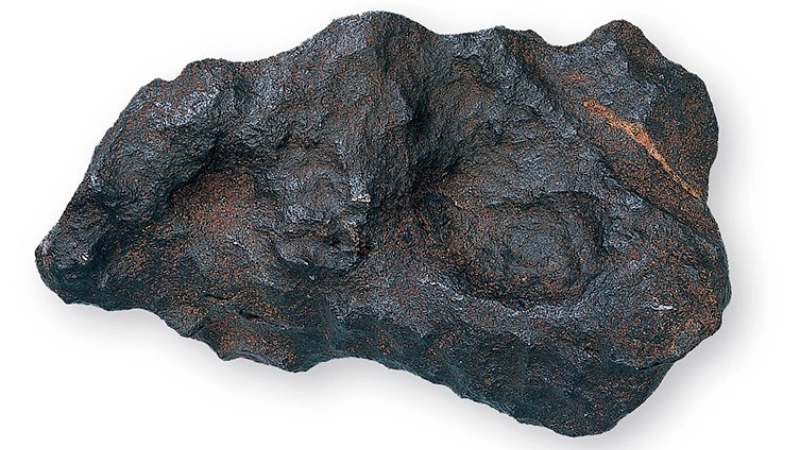
Chondrites: Primitive Building Blocks from the Early Solar Nebula
Chondrites represent the most abundant type of stony meteorite and are among the most primitive, least altered materials available for study from the formation of our solar system. Their defining characteristic is the presence of chondrules: small, millimeter-sized, spherical to sub-spherical inclusions that make up a significant portion of their volume. These chondrules are not terrestrial rocks; they are believed to have formed as molten or partially molten silicate droplets in the turbulent gas and dust of the early solar nebula, which cooled and solidified remarkably quickly (on timescales of minutes to hours).
Studying chondrules provides crucial insights into the physical and chemical conditions that existed during the initial stages of planetary formation before solid bodies fully accreted. Chondrites are further subdivided into several major groups based on their bulk chemical composition (especially element ratios and oxygen isotopes), mineralogy, and the degree of thermal metamorphism and aqueous alteration they have experienced on their parent bodies:
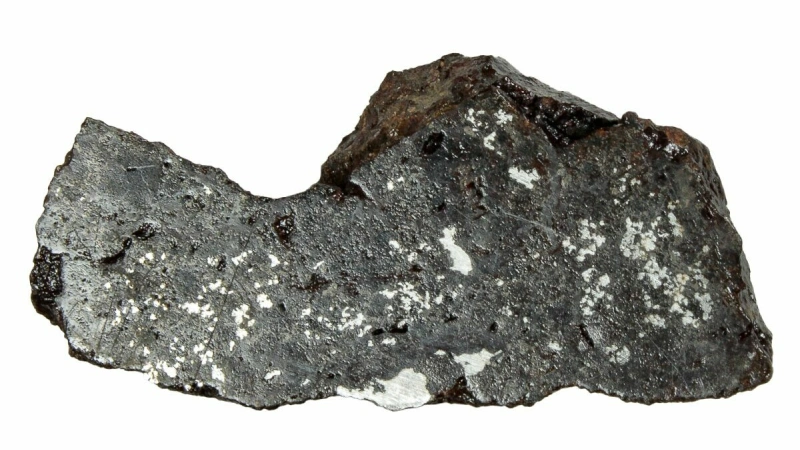
Ordinary Chondrites: These are the most frequently recovered type of meteorite on Earth. They are classified into three main groups based primarily on their total iron content and the oxidation state of that iron: H group (High-iron): Characterized by high total iron content, much of which is in metallic form. L group (Low-iron): Have lower total iron content than H chondrites. LL group (Low-low-iron): Possess the lowest total iron content and significantly less metallic iron compared to H and L chondrites (more iron is in oxidized forms).
Each group originated from a distinct asteroid parent body. Carbonaceous Chondrites: These relatively rare but scientifically invaluable chondrites are distinguished by their higher abundance of carbon (including complex organic molecules), water-bearing minerals (formed by aqueous alteration on their parent body), and often, presolar grains (microscopic dust particles that predate the formation of the Sun).
Also, if you would like to know about how meteorites are formed, we recommend that you check out the article How Meteorites are Formed.
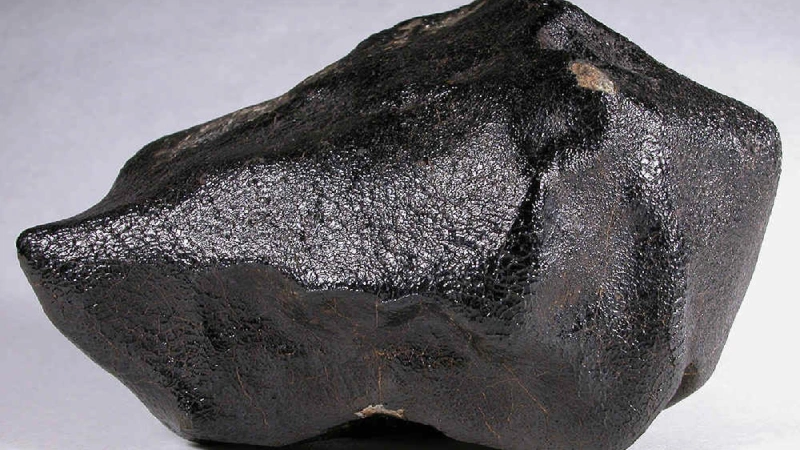
They are considered some of the most primitive meteorites, offering critical clues about the initial composition of the solar nebula, the conditions where icy and organic materials condensed, and the potential delivery of water and organic molecules to the early Earth.
Well-studied groups include CI, CM, CO, CV, CR, CK, and Cmg2. Enstatite Chondrites: These unique and relatively rare chondrites are characterized by a high abundance of the magnesium-rich pyroxene mineral enstatite (MgSiO3) and are extremely reduced in chemistry (elements like iron are predominantly in metallic or sulfide forms rather than silicates or oxides).
Their composition suggests they formed under very oxygen-poor conditions in the inner regions of the solar nebula, possibly closer to the Sun than the source regions of other chondrite types.
Achondrites: Igneous Rocks from Differentiated Parent Bodies
In contrast to the primitive, undifferentiated nature of most chondrites, achondrites are stony meteorites that completely lack chondrules. They originate from parent bodies (asteroids, the Moon, or Mars) that were sufficiently large or heated enough to undergo differentiation. Differentiation is a geological process where a body melts internally, allowing denser materials (like iron-nickel metal) to sink to form a core, while lighter silicate materials rise to form a mantle and crust.
Also, if you are looking to buy Demantoid, you can visit the Demantoid page.
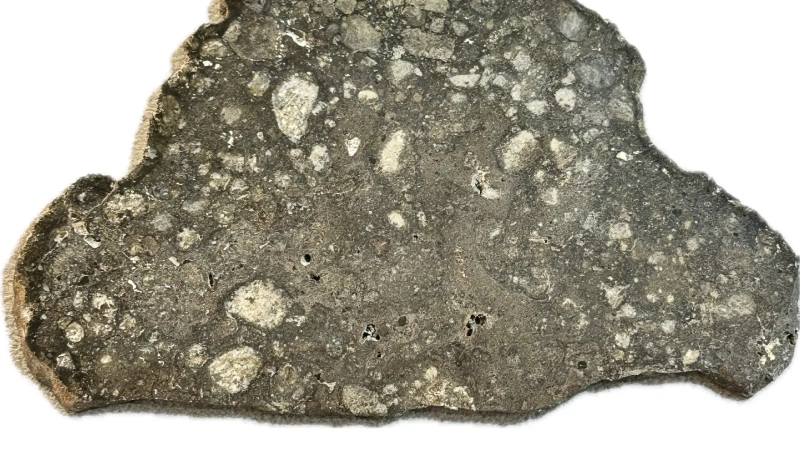
Achondrites are essentially igneous rocks that formed by melting and crystallization within these differentiated parent bodies. They resemble volcanic or plutonic rocks found on Earth but come from extraterrestrial sources. Achondrites are divided into numerous groups based on their composition and likely parent body, including:
HED Meteorites: This significant group comprises Howardites, Eucrites, and Diogenites. Extensive research, including comparisons with data from space missions like Dawn, strongly links this suite of meteorites to the asteroid (4) Vesta, indicating they represent samples of its crust (Eucrites), mantle (Diogenites), and impact mixtures of both (Howardites).
They provide a detailed record of magmatic processes on a differentiated asteroid. Martian Meteorites: These exceptionally valuable samples are rocks that were launched from the surface or shallow subsurface of Mars into space by powerful asteroid impacts. They traveled through interplanetary space before landing on Earth.
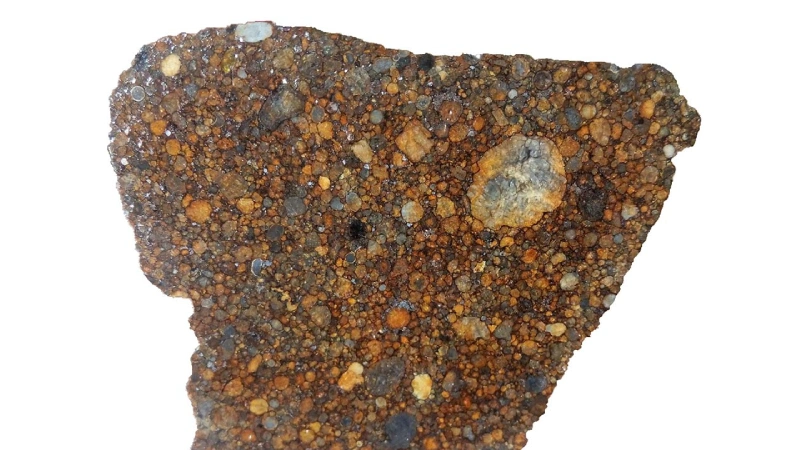
Studying their unique mineralogy, chemistry, isotopic signatures, and trapped Martian atmospheric gases provides unparalleled direct information about the geological history, volcanic activity, presence of water, and atmospheric composition of the Red Planet. Lunar Meteorites: Similar to Martian meteorites, these are fragments of the Moon’s crust or regolith that were ejected into space by impacts.
They offer scientists samples from various regions of the Moon, including areas not sampled by the Apollo or Luna missions. Analyzing lunar meteorites enhances our understanding of the Moon’s bulk composition, geological evolution, and bombardment history.
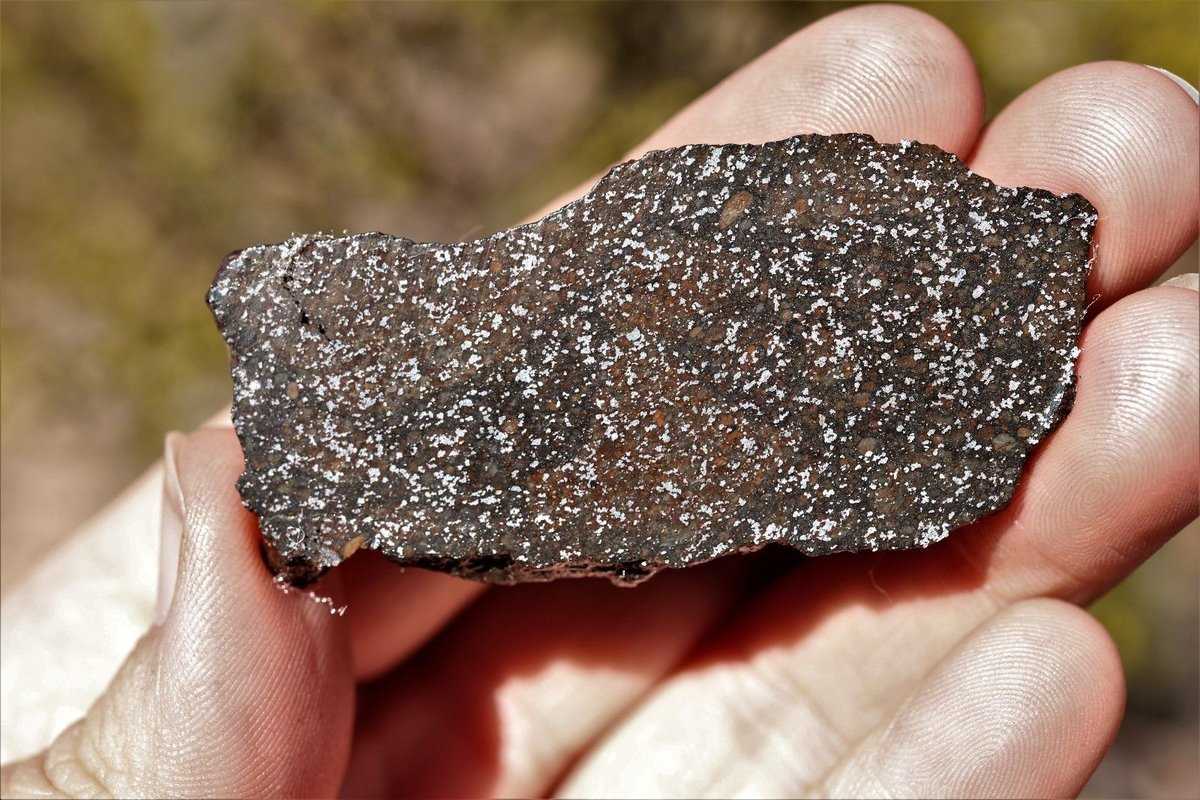
Iron Meteorites: Samples from the Hearts of Protoplanets
Representing about 5% of meteorites found on Earth, iron meteorites are perhaps the most visually striking type due to their metallic nature and often significant mass. They are composed predominantly of iron-nickel alloys and are widely believed to originate from the metallic cores of ancient differentiated asteroids or protoplanets that were shattered by impacts early in solar system history.
Unlike stony meteorites which sample crust or mantle, iron meteorites offer a unique opportunity to study the material from the deep interiors of these vanished worlds, providing direct evidence for core formation and differentiation processes. Iron meteorites are primarily classified based on their internal structure and chemical composition, particularly their nickel content and trace element abundances. Structurally, they fall into three main categories revealed upon cutting and etching:
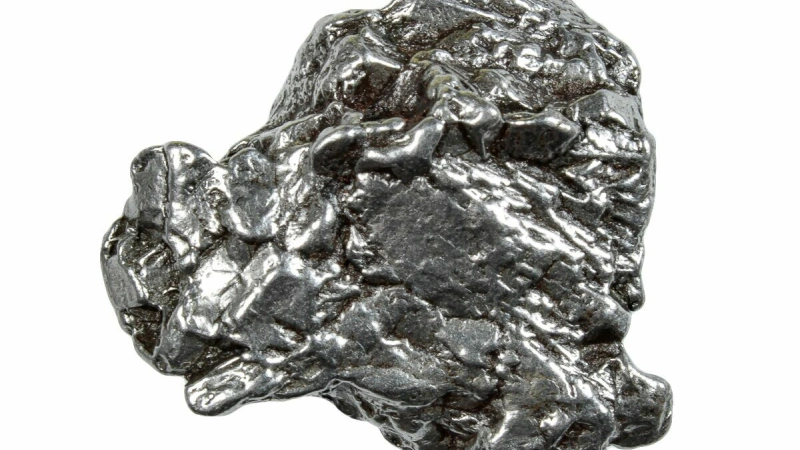
Structural Classification of Iron Meteorites:
Hexahedrites: These iron meteorites have a relatively low nickel content typically 5-6.5 weight percent. Their structure is dominated by a single crystal of the low-nickel iron-nickel alloy, kamacite. When polished and etched, hexahedrites often display fine, parallel lines called Neumann lines.
These lines are not crystalline growth features but rather mechanical deformation structures shock lamellae resulting from impact events on the parent body after the core had solidified. Octahedrites: This is the most common structural class of iron meteorite, representing the majority of iron falls. They have nickel content typically ranging from 6.5% to about 13%. Their characteristic feature, revealed by etching a polished surface, is the intricate, geometric pattern known as the Widmanstätten pattern. This stunning pattern is formed by the intergrowth of broad bands or lamellae of kamacite and thin lamellae of the high-nickel iron-nickel alloy, taenite.
Also, if you are looking to buy Jewellery, you can visit the Jewellery page.
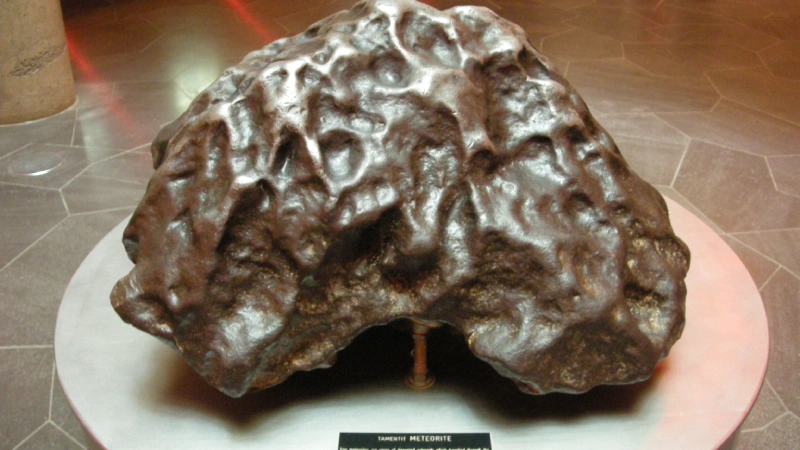
The Widmanstätten pattern is a direct result of the extremely slow cooling estimated rates of only a few degrees Celsius per million years of the iron-nickel core deep within the parent body, allowing the two metallic phases to exsolve and crystallize into this distinct intergrowth structure. Octahedrites are further subdivided based on the coarseness of their Widmanstätten pattern e.g., coarse, medium, fine octahedrites, which correlates with their bulk nickel content and cooling history.
Ataxites: These are the rarest structural type of iron meteorite and are characterized by a high nickel content typically exceeding 13%, sometimes over 20%. Due to this high nickel content and the very slow cooling rates, they lack the visible Widmanstätten pattern. Ataxites are composed mainly of fine-grained taenite, often mixed with microscopic kamacite and other minerals, resulting in a more homogeneous appearance. The best-known example is the Hoba meteorite from Namibia, which is largely composed of ataxite material and is the largest single meteorite ever found on Earth.
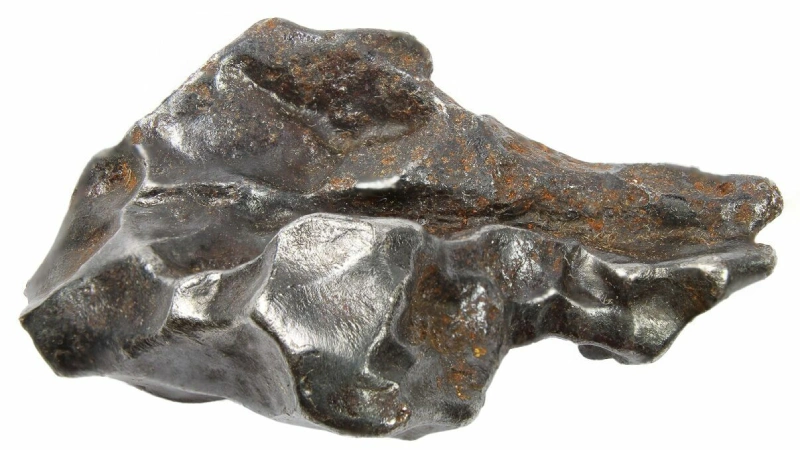
Iron meteorites are exceptionally valuable for scientific study. Their bulk composition and internal structure provide critical data on the conditions, cooling rates, and differentiation processes that occurred during the formation and evolution of differentiated minor planets. Their metallic nature also makes them relatively resistant to terrestrial weathering compared to stony types, allowing some very ancient falls to be preserved and adding to our collection of samples from beyond Earth.
Stony-Iron Meteorites: Bridging the Gap Between Core and Crust
Comprising only about 1% of all meteorite finds, stony-iron meteorites are the rarest main type. These fascinating meteorites represent a compelling intermediate class, containing a roughly equal mixture of silicate minerals and iron-nickel metal. Their unique composition provides invaluable insights into the structure and processes occurring at the boundaries between the metallic cores and the rocky mantles or crusts of differentiated parent bodies. Stony-iron meteorites are divided into two distinct main groups: pallasites and mesosiderites.
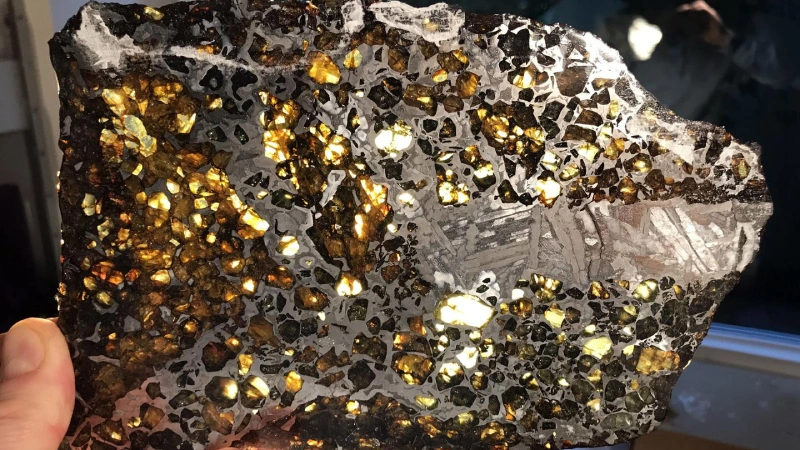
Pallasites: Gemstones from the Core-Mantle Boundary
Pallasites are arguably the most visually stunning of all meteorites, often displaying translucent, frequently gem-quality olivine crystals a magnesium-iron silicate mineral embedded within a continuous matrix of iron-nickel metal. This striking texture gives them a beautiful, stained-glass-like appearance when cut and polished.
Pallasites are widely believed to have formed at the core-mantle boundary of differentiated asteroids, where solid olivine from the lower mantle accumulated and mixed with molten metal from the top of the core during the cooling and solidification process. Studying the composition of the olivine crystals and the metal matrix provides direct information about the chemical and physical conditions, including temperature and pressure, at this crucial interface within a planetary body.
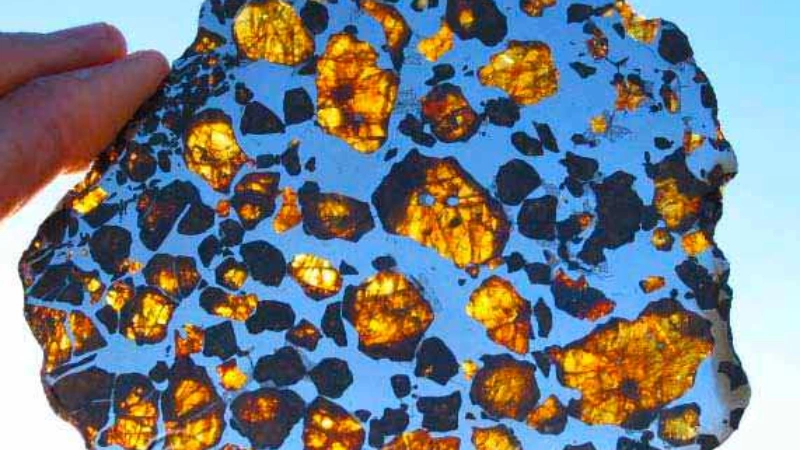
The metal phase in pallasites is typically similar in composition and structure to that found in many iron meteorites, often displaying the Widmanstätten pattern upon etching, and contains trace elements reflecting the core environment.
Mesosiderites: Impact Breccias from Crust and Mantle
Mesosiderites are the second main group of stony-iron meteorites, but they are compositionally and texturally very different from pallasites. Mesosiderites are brecciated, meaning they are made up of angular fragments of both silicate rock and iron-nickel metal that were broken up and then re-cemented together by subsequent processes, likely involving impact melting.
The silicate component in mesosiderites is dominated by fragments of volcanic and plutonic rocks composed mainly of pyroxene and plagioclase feldspar, along with lesser amounts of olivine and other minerals.These mineral assemblages are typical of asteroid crusts and mantles, contrasting sharply with the large, individual olivine crystals characteristic of pallasites. Mesosiderites are thought to have formed through violent, high-energy impact events on differentiated asteroids.
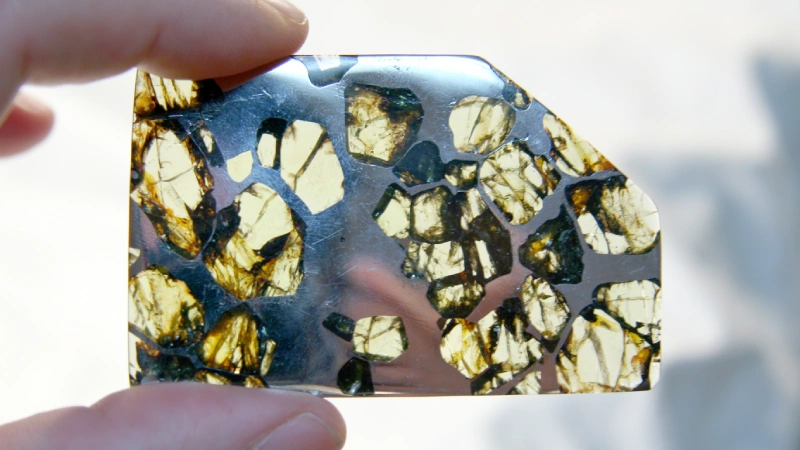
These impacts shattered existing crustal and mantle rocks and mixed them intimately with metallic core material exposed by the impact, or potentially with metal from the impactor itself, creating a chaotic jumble of rock and metal fragments. Their brecciated texture and the presence of both abundant metal and diverse silicate rock fragments are strong evidence for this catastrophic impact-mixing hypothesis.
Stony-iron meteorites, despite their rarity, are critically important for understanding the internal structure, differentiation processes, and impact histories of the small planetary bodies from which they originated. They provide tangible evidence for the layered structure of these early solar system objects.
The Importance of Meteorite Types
Understanding the different types of meteorites is crucial for several reasons:
- Planetary Formation: Meteorites provide clues about the processes that formed and shaped our solar system. By studying their composition and structure, scientists can infer the conditions present during the early stages of planetary formation.
- Astrobiology: Some meteorites, particularly carbonaceous chondrites, contain organic compounds and water, offering insights into the potential origins of life and the possibility of life elsewhere in the universe.
- Planetary Geology: Achondrites and other differentiated meteorites help scientists study the geology of other planetary bodies, such as Mars and the Moon, without the need for expensive space missions.
- Impact Events: Iron meteorites and mesosiderites provide information about the frequency and effects of impact events in the solar system, which can help assess the potential threat of future impacts on Earth.
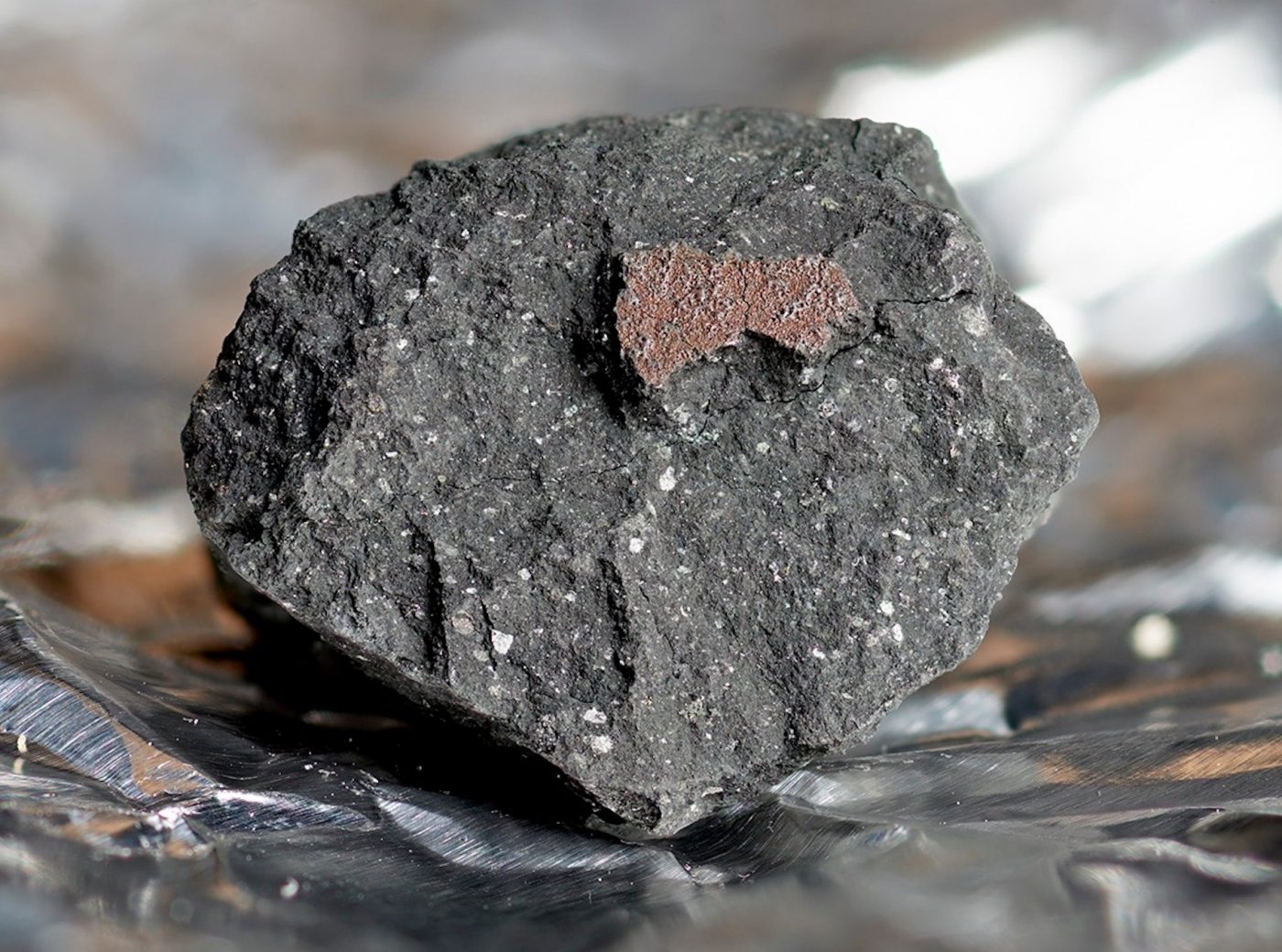
How Meteorites Are Found and Studied
Meteorites can be found in a variety of environments, but certain locations are more favorable for their discovery. Deserts and polar regions are prime hunting grounds because meteorites stand out against the barren landscape and are less likely to be covered by vegetation or eroded by weathering processes. The Antarctic ice fields, in particular, have yielded a significant number of meteorite finds due to their stable, cold environment that preserves the meteorites.
Once a meteorite is found, it is carefully collected and often sent to specialized laboratories for analysis. Scientists use a range of techniques to study meteorites, including:
- Petrography: This involves examining thin sections of meteorites under a microscope to study their mineralogy and texture.
- Isotopic Analysis: By measuring the ratios of different isotopes in meteorites, scientists can determine their age and the processes they have undergone.
- Spectroscopy: This technique uses light to analyze the composition of meteorites, providing information about their mineral content and chemical makeup.
- Radiometric Dating: This method measures the decay of radioactive isotopes in meteorites to determine their age and the timing of events in their history.
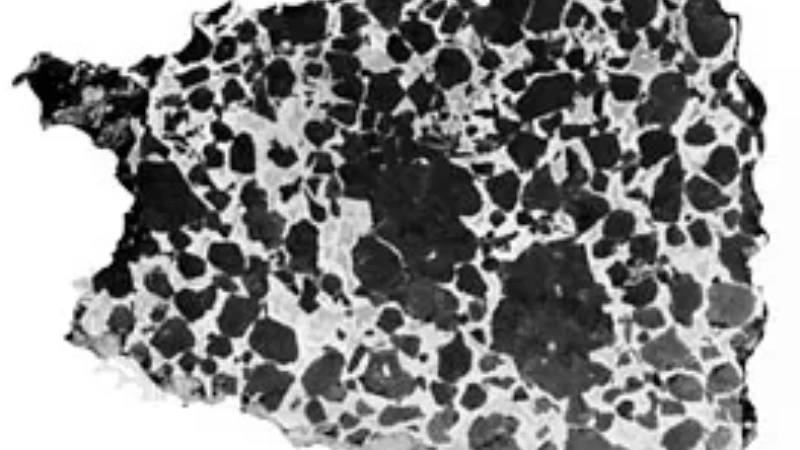
Famous Meteorites and Their Impact
Several meteorites have gained fame due to their size, composition, or the circumstances of their discovery. Here are a few notable examples:
- The Hoba Meteorite: Discovered in Namibia, the Hoba Meteorite is the largest known meteorite, weighing about 60 tons. It is an iron meteorite with a simple structure and has become a significant tourist attraction.
- The Allende Meteorite: This carbonaceous chondrite fell in Mexico in 1969 and is one of the most studied meteorites. Its rich content of pre-solar grains and organic compounds has provided valuable insights into the early solar system.
- The Chelyabinsk Meteorite: This meteorite exploded over Russia in 2013, creating a powerful shockwave that caused widespread damage and injuries. The event highlighted the potential threat of near-Earth objects and sparked renewed interest in studying and tracking meteoroids.
Collecting and Preserving Meteorites
Meteorite collecting is a popular hobby for many enthusiasts. However, it is essential to handle and preserve meteorites properly to maintain their scientific value. Here are some tips for collectors:
- Handle with Care: Avoid touching meteorites with bare hands to prevent contamination. Use gloves or handle them with clean, dry hands.
- Store in a Dry Environment: Meteorites, especially iron meteorites, can rust if exposed to moisture. Store them in a low-humidity environment and consider using desiccants to absorb excess moisture.
- Document Finds: Keep detailed records of where and when a meteorite was found, as well as any notable features. This information is valuable for scientific research.
- Share with Researchers: If you find a significant meteorite, consider sharing it with scientists or institutions for study. Many meteorite hunters donate a portion of their finds to research facilities.
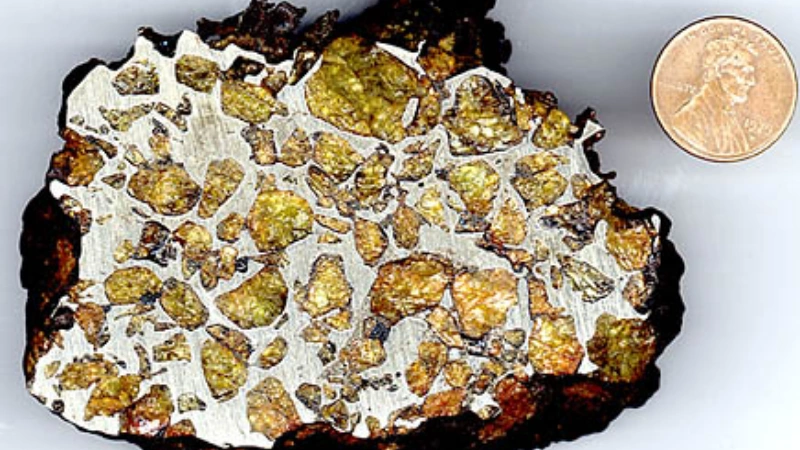
The Future of Meteorite Research
Advances in technology and space exploration continue to enhance our understanding of meteorites and their significance. Missions like NASA’s OSIRIS-REx, which returned samples from the asteroid Bennu, provide pristine material for study, free from Earth’s contamination. These missions allow scientists to compare extraterrestrial samples directly with meteorites found on Earth, deepening our knowledge of the solar system’s history and evolution.
Additionally, collaborations between amateur collectors and professional researchers are increasingly important. Enthusiasts play a vital role in discovering new meteorites and contributing to the scientific community’s understanding of these cosmic visitors.
Conclusion
Meteorites are more than just rocks from space; they are time capsules that hold the secrets of our solar system’s past. By studying the different meteorite types, we gain insights into planetary formation, the origins of life, and the dynamic processes that shape celestial bodies. Whether you are a scientist, a collector, or simply curious about the universe, understanding the diverse and fascinating world of meteorites enriches our appreciation of the cosmos and our place within it.
From the common stony chondrites to the rare and beautiful pallasites, each meteorite type tells a unique story. As we continue to explore and study these extraterrestrial visitors, we uncover more about the vast and mysterious universe we call home. So, the next time you gaze up at the night sky, remember that some of those shining stars may one day send a meteorite to Earth, bringing with it a piece of the cosmos for us to discover and cherish.
FAQs
What are the main types of meteorites?
Meteorites are classified into three main types: stony meteorites, iron meteorites, and stony-iron meteorites. Stony meteorites are further divided into chondrites and achondrites, while iron meteorites are categorized into hexahedrites, octahedrites, and ataxites. Stony-iron meteorites include pallasites and mesosiderites.
Why is it important to study different meteorite types?
Studying different meteorite types helps scientists understand the formation and evolution of the solar system, the geology of other planetary bodies, and the potential origins of life. Each type of meteorite provides unique insights into the conditions and processes that shaped their parent bodies.

